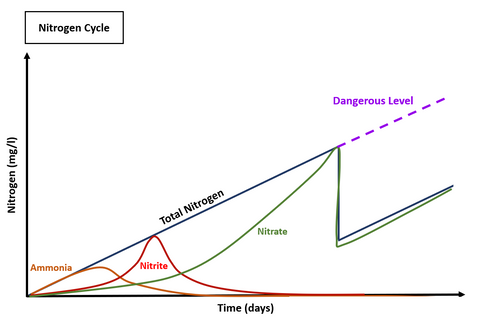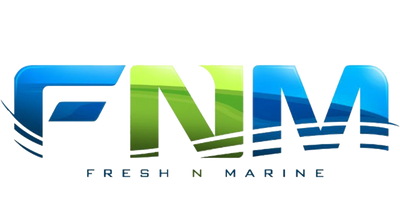The main reason that draws hobbyists into starting a saltwater aquarium is due to the many colorful, and unique range of marine creatures that hobbyists are able to keep. Many often try to replicate the natural reef in their own marine aquarium, for their own viewing delight. Yet, corals aside there are hobbyists who adopt a different approach, which is the fish only with live rock aquariums. Also known as FOWLR.
In this article, we will go through the two different approaches. The main difference between these two systems is that;
The 1st system usually called a reef tank is one where marine creatures are kept alongside corals.
The 2nd, known as FOWLR aquariums typically consists of only liverocks and marine fishes. These systems are usually the route hobbyists opt for when the fishes they keep are known to be non-reef safe, this means that they have a tendency to consume corals.
Differences aside, we have summarised the important points of starting a saltwater aquarium. The breakdown are as follows
Firstly, we have found that the most important factor of a saltwater aquarium is stability. It refers to the consistency of water parameters in the aquarium as marine fish and corals are extremely sensitive to change. A major pillar of support to ensure stability firstly comes from our filtration systems.
Filtration

You may remember from the previous blogs that the best known filtration system for freshwater aquariums are canister filters. However, the most popular filtration setup in a saltwater aquarium is known as the sump filtration system.
Breaking it down, we help you understand more about the sump filtration system.
|
Sump Filtration System |
|
|
Advantages |
Disadvantages |
|
Stability |
Space |
|
Flexibility |
Risk of leakage |
|
Efficiency |
Cost |
|
Stocking levels |
|
The pros of a sump filtration system clearly outweighs its cons. As a sump adds to the total water volume in the aquarium system, it simplifies the need to maintain water quality as swings in water parameters are less noticeable in a large tank due to dilution. A sump system also allows flexibility as you are in full control of any media and equipment you decide to use. This thus directly impacts the efficiency of the entire sump filtration system. Having a sump filtration system also enables increased stocking levels due to its role in effective filtration and the increase in water volume.
Having a sump filtration system however, requires ample space usually under the aquarium, hidden by a cabinet. It also increases risk of leakage when bad piping is fixed. The cost of running a sump filtration system is also relatively more expensive as compared to other forms of filtration systems.
Substrate
Known to be an integral part of a saltwater aquarium, more and more saltwater hobbyists are however dropping the tradition. There are a few options to the kind or size of substrate used, including the option of not using any substrate. Below is a summary breakdown of the reasons as to why hobbyists use either approach.
|
Type of substrate |
Reason for use |
|
Bare-bottom |
|
|
Live aragonite sand |
|
Protein Skimmer
Many have come forth to ask if a protein skimmer is truly required in a saltwater aquarium and what would happen if you do not run a protein skimmer in a saltwater aquarium.
We address this by first understanding the importance of running a protein skimmer in a saltwater aquarium. Protein skimmers are used to remove organic waste which typically consists of algae, dissolved organic waste such as fish excrement, leftover food and proteins. They work by simply injecting millions of microbubbles in the reaction chamber. The microbubbles then continue to burst and release the organics as foam. The foam will then build up to rise up the reaction chamber to the collection cup or skimmer cup.
Hence, if a protein skimmer is not used in a saltwater aquarium, the organic waste will break down and cause spikes in ammonia, nitrite and nitrate.
From the explanation above, we thus highly recommend the use of a skimmer whenever possible.
Aquarium LEDs
Many hobbyists are now leaning towards using powerful LEDs to illuminate their aquariums. However, there are different options in the light fixture choices. They are mainly the T5 light bulbs and LEDs.
|
T5 Bulbs
|
LEDs
|
|
Reason for popularity of T5 bulbs |
Reason for popularity of LEDs |
|
|
From the above summary of reasons we are able to better understand the reason as to why many hobbyists prefer the use of LEDs. Some experienced hobbyists who have mainly SPS (Small Polyp Stony) corals in their reef tank tend to run a hybrid system consisting of LEDs and supplement T5 lighting. This is due to the maximum uniformity in light distribution. An extremely important aspect of keeping SPS corals.
However, it is important to take note that when keeping a FOWLR system, it is possible to use simple lighting systems as light penetration would not be as important due to corals not being in the equation.
Nitrogen Cycle
The below is a graph summarizing the nitrogen cycle
As explained in the previous blog, “Starting a planted aquarium” the nitrogen cycle works the same way. Ammonia and nitrite are extremely toxic to any livestocks. Thus, it is important to note that ammonia and nitrite are to be at undetectable levels in order to safely add your first livestock. The nitrogen cycle in a saltwater aquarium typically takes a month.
Addition Of Livestocks
After the nitrogen cycle is completed, you would be safe to add your very first saltwater inhabitant into the aquarium through proper acclimatisation process.



